Understanding the Impact of Environmental Factors on Cannabis Breeding
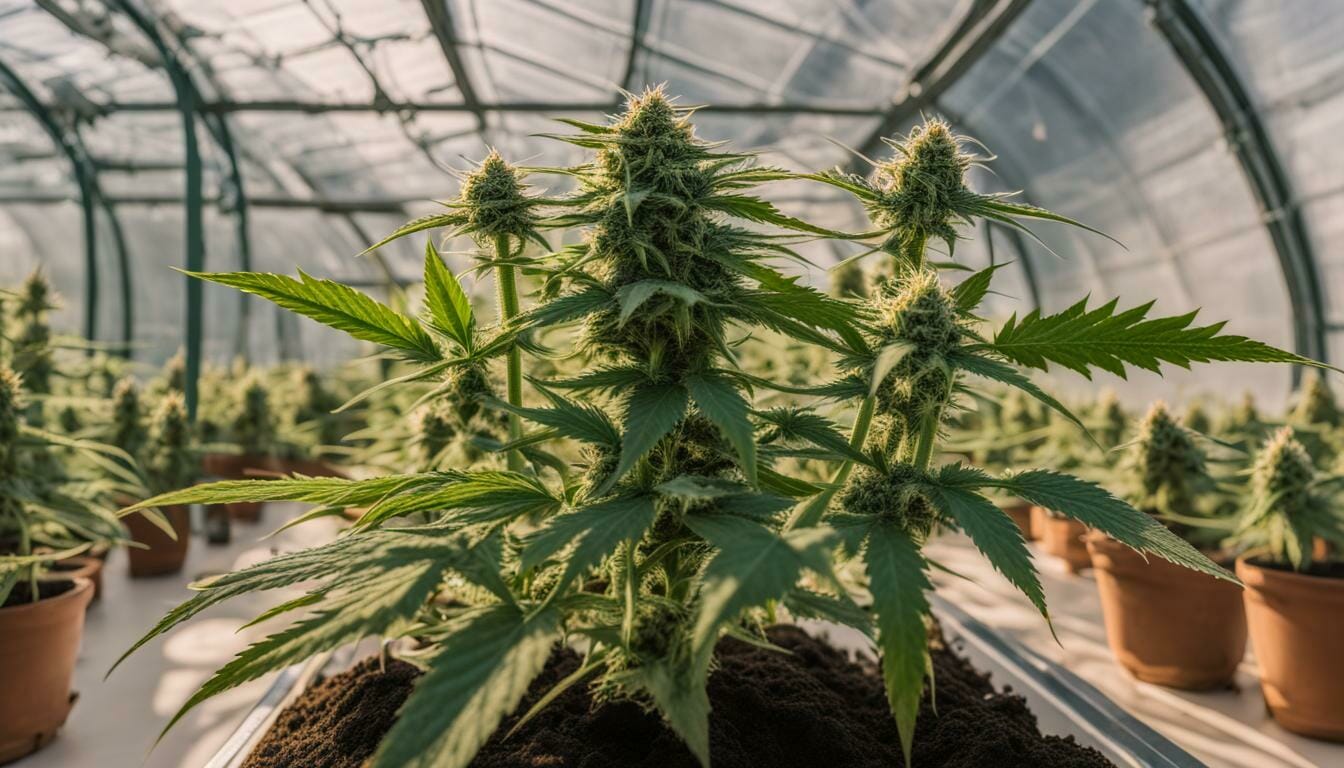
Cannabis breeding involves a complex process of selecting and manipulating genetic traits to create new strains with desirable characteristics. However, genetics alone do not dictate a plant’s development, as environmental factors such as soil quality, temperature, humidity, light exposure, air quality, water quality, and climate play a pivotal role in shaping the plant’s growth, development, and overall genetic expression.
Therefore, understanding the impact of environmental factors on cannabis breeding is crucial for producing consistent, high-quality strains that meet the ever-evolving demands of the market.
Key Takeaways:
- Environmental factors significantly influence cannabis breeding.
- Soil quality, temperature, humidity, light exposure, air quality, water quality, and climate all impact the plant’s growth, development, and genetic expression.
- Environmental control is essential in cannabis breeding to maintain consistent, stable genetic lines.
Environmental Factors and Cannabis Genetics
Environmental factors play a crucial role in shaping the genetics of cannabis plants. The unique characteristics of cannabis strains are a result of a complex interplay of genetic and environmental factors. Understanding how these factors influence cannabis genetics is essential for successful breeding.
The environment in which a cannabis plant grows affects its growth rate, yield, potency, and overall quality. For example, cannabis plants grown in hot and dry environments may have higher levels of THC, while plants grown in cooler environments may have denser buds. These differences in genetics are a result of the plant’s adaptation to its environment.
Studies have shown that environmental factors such as temperature, humidity, light exposure, air quality, water quality, and soil quality all influence the genetics of cannabis plants. Each of these factors can have a significant impact on the plant’s growth and development.
Environmental Factors and Cannabis Genetics
The environment in which a cannabis plant grows can have a significant impact on its genetics. Studies have shown that environmental factors such as temperature, humidity, light exposure, air quality, water quality, and soil quality can all influence the plant’s growth and development.
Temperature is one of the most critical environmental factors for cannabis plants. The ideal temperature range for cannabis growth is between 70-80°F (21-27°C). If the temperature is too low, the plant may not grow as quickly, while high temperatures can lead to stunted growth or even death. Temperature fluctuations can also affect the plant’s genetics, leading to undesirable traits.
Humidity is another essential factor in cannabis breeding. High humidity levels can lead to mold and mildew growth, while low humidity can cause the plant to wilt and die. Additionally, humidity levels can impact the plant’s genetic expression, leading to changes in potency and aroma.
Light exposure is also critical in cannabis breeding. Different spectrums of light can impact the plant’s growth and development, leading to variations in yield and potency. For example, plants grown under blue light may have denser buds, while plants grown under red light may produce more resin.
Air quality can also have a significant impact on cannabis genetics. Pollutants and high carbon dioxide levels can lead to decreased growth rates and undesirable traits. Proper ventilation is essential to remove pollutants and ensure the plant’s healthy growth and development.
Water quality and soil quality also play crucial roles in cannabis breeding. The pH levels, mineral content, and source of water can impact the plant’s health and genetic expression. Soil quality is also essential, as it impacts the plant’s nutrient uptake and overall growth rate.
In conclusion, understanding the impact of environmental factors on cannabis breeding is critical for successful cannabis cultivation. Environmental factors such as temperature, humidity, light exposure, air quality, water quality, and soil quality can all influence the plant’s genetics, leading to variations in yield, potency, and overall quality. By controlling these factors, breeders can produce high-quality cannabis strains that meet specific market demands.
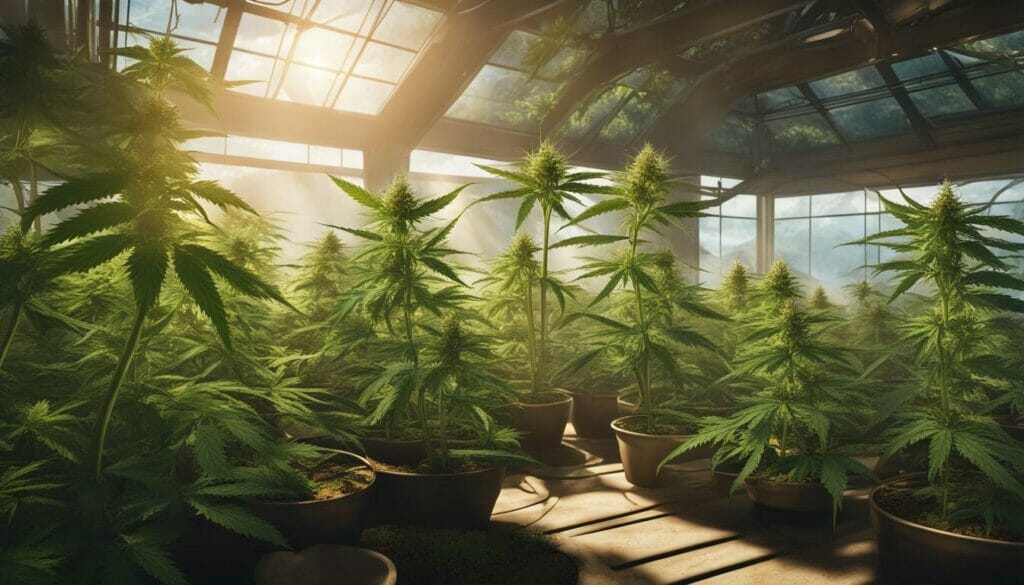
Soil Quality and Cannabis Breeding
In cannabis breeding, the quality of soil plays a crucial role in determining the plant’s overall health and genetic expression. Soil quality encompasses several factors, including nutrient content, pH levels, and soil composition, all of which impact the plant’s ability to absorb essential elements required for growth and development.
One of the key factors in soil quality is the nutrient content. Nutrients like nitrogen, potassium, and phosphorus are vital for plant growth and development, and deficiencies can lead to stunted growth or reduced yields. On the other hand, an excess of nutrients can also be harmful to the plant, leading to toxicity and other issues.
Another critical aspect of soil quality is the pH level. Most cannabis plants prefer a slightly acidic soil with a pH range between 6.0 and 7.0. However, some strains may require a more alkaline or acidic environment, depending on their genetic makeup. By testing the soil pH and adjusting it accordingly, breeders can optimize the growing conditions for their specific strains.
The composition of the soil is also an important factor to consider in cannabis breeding. Soil texture, structure, and organic matter content can all affect nutrient availability, water retention, and aeration, which in turn impact plant growth and genetic expression. For example, excessively compacted soils can hinder root development and reduce plant vigor, while well-aerated soils with high organic matter content can promote healthy root growth and nutrient uptake.
Overall, soil quality is a critical factor in cannabis breeding, and breeders must take into account the specific needs of their strains to optimize growing conditions and maximize yields. By testing and adjusting nutrient content, pH levels, and soil composition, breeders can create an ideal environment for their plants to thrive.
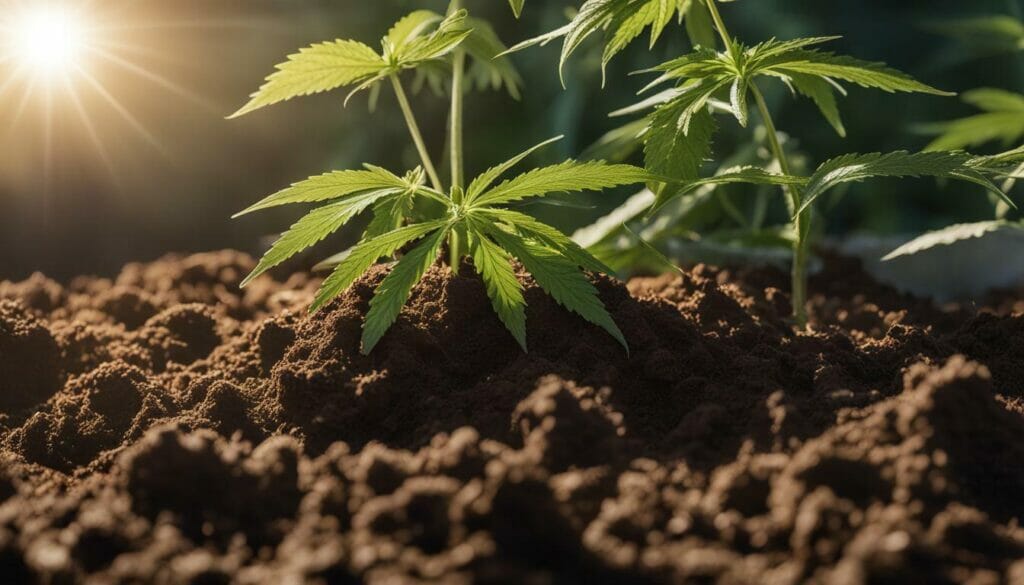
Temperature and Cannabis Breeding
Temperature plays a critical role in cannabis breeding, as it influences the growth rate and genetic expression of the plant. The ideal temperature range for cannabis growth is between 20-30 degrees Celsius (68-86 degrees Fahrenheit).
Fluctuations in temperature can have a significant impact on cannabis genetics. At temperatures above 30 degrees Celsius (86 degrees Fahrenheit), the plant may experience heat stress, which can cause damage to the DNA and lead to changes in genetic expression. Conversely, temperatures below 20 degrees Celsius (68 degrees Fahrenheit) can slow down growth and delay the maturity of the plant.
It’s essential to provide a consistent and controlled temperature environment to maintain genetic stability in cannabis breeding. When growing cannabis indoors, a well-maintained ventilation and air conditioning system can help to regulate temperature and maintain a consistent growing environment.
Furthermore, it’s crucial to consider temperature variations when selecting and breeding cannabis strains. Depending on the climate and location, certain strains may be better suited to the environment and have a higher likelihood of producing stable genetics.
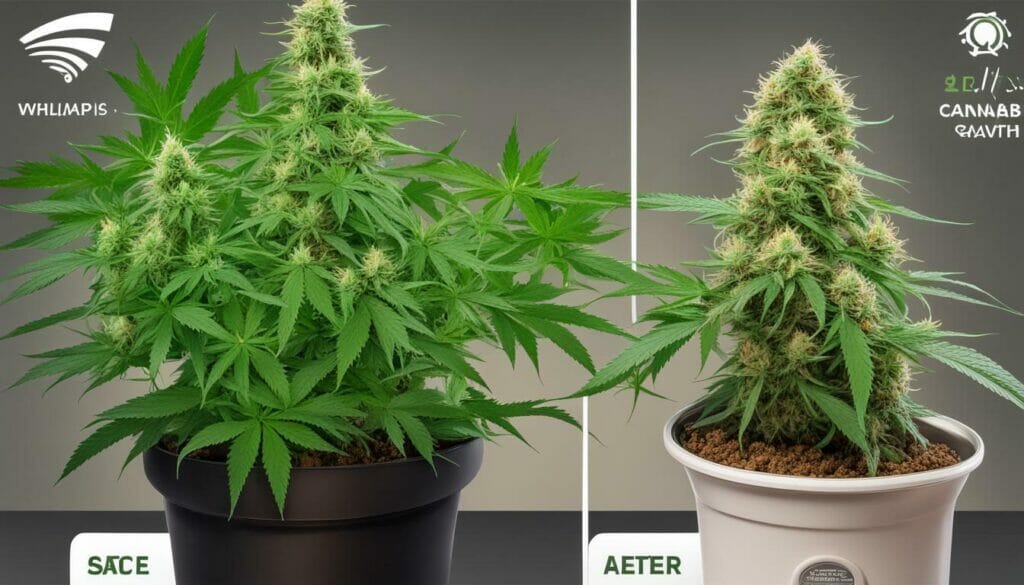
“Cannabis plants are sensitive to temperature fluctuations, and breeders need to maintain a consistent environment to produce stable genetics.”
Humidity and Cannabis Breeding
The level of humidity in the environment can have a significant impact on cannabis breeding and the expression of genetic traits. Humidity refers to the amount of moisture in the air, and it is measured as a percentage of the maximum amount of moisture the air can hold.
High humidity levels can lead to mold and mildew growth, which can damage crops and reduce yields. Low humidity levels, on the other hand, can cause plants to dry out and become stressed, making them more susceptible to disease and pest infestations.
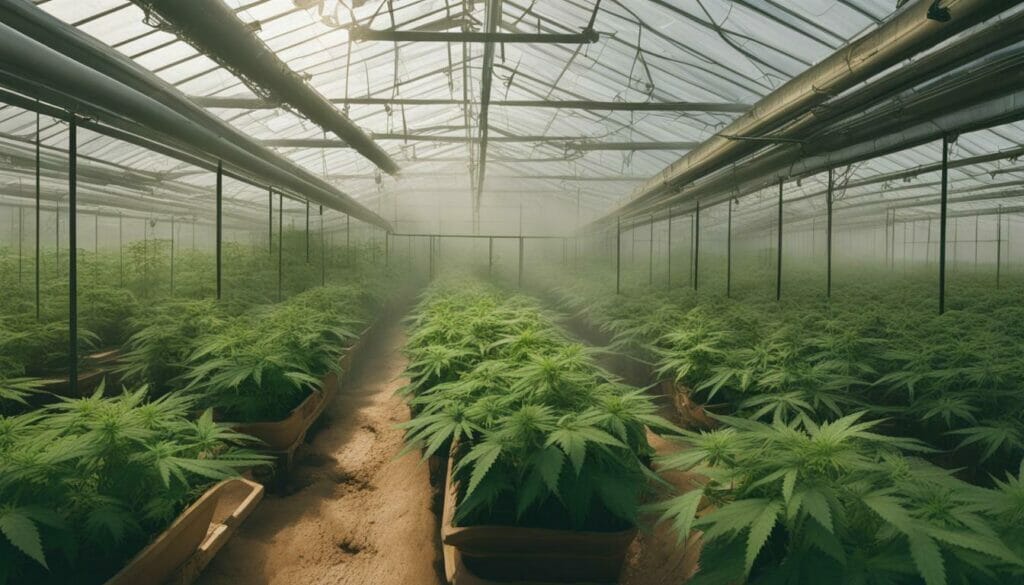
When breeding cannabis, it is important to maintain a consistent level of humidity throughout the growth cycle. This can be achieved through the use of humidifiers and dehumidifiers, which are designed to regulate moisture levels in the air.
Humidity can also influence the physical characteristics of the plant, including the size and shape of the leaves and buds. High humidity levels can cause leaves to become larger and more elongated, while low humidity levels can result in smaller, more compact leaves.
It is crucial to monitor and control humidity levels, as they can impact the expression of genetic traits and ultimately affect the final product.
Light Exposure and Cannabis Breeding
In addition to soil quality, temperature, humidity, air and water quality, light exposure is another crucial environmental factor that greatly influences cannabis breeding. Light not only drives photosynthesis, but also affects the plant’s growth, development and genetic expression.
The light spectrum that cannabis plants receive during their life cycle determines the morphological characteristics of the plant, such as stem thickness, leaf size, and bud density. The amount of light a plant receives also affects its overall yield and potency.
Plants grown under inadequate light may experience stunted growth, smaller buds and reduced potency. Conversely, excessive light intensity or duration may lead to heat stress, light burn and bleaching of the buds, which can also decrease yield and potency.
Growers can manipulate light exposure by adjusting the timing (the duration of light and dark periods) and the intensity (the brightness of light) during the growth cycle. Light exposure can be controlled with the use of grow lights, such as high-pressure sodium (HPS), light emitting diode (LED) or metal halide (MH) lights, which provide different spectrums of light.
For instance, HPS lights are commonly used during the flowering stage for their highly efficient and intense yellow/red light spectrum, whereas MH lights are ideal for vegetative growth. LED lights offer a wide range of spectrums and are energy-efficient, making them a popular choice for indoor growers.
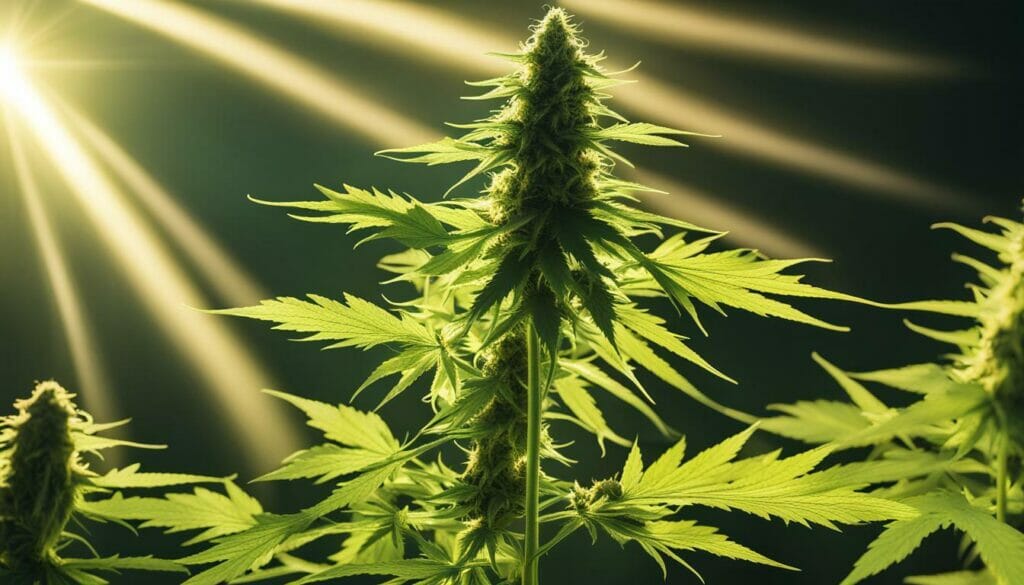
It is important to note that light exposure also affects the cannabinoid and terpene profiles of the plant. Therefore, growers can adjust light exposure to achieve a specific cannabinoid or terpene profile, influencing the plant’s medicinal or recreational effects.
Conclusion
Light exposure is a critical factor in cannabis breeding, influencing the growth, development and genetic expression of the plant. Understanding how to manipulate light exposure can help growers optimize their yields and potency, as well as develop specific cannabinoid and terpene profiles for medicinal or recreational use.
Air Quality and Cannabis Breeding
Air quality is a critical environmental factor that can significantly impact cannabis breeding. Poor air quality, caused by pollutants and lack of ventilation, can lead to stunted growth, decreased yields, and reduced genetic expression.
Carbon dioxide (CO2) levels are another crucial factor that can affect cannabis growth and development. CO2 is necessary for photosynthesis, the process by which plants use sunlight to produce energy, and increased CO2 levels can lead to larger yields and faster growth.
| Pollutants | Effects |
|---|---|
| Ozone | Can cause leaf damage and reduce plant growth |
| Sulfur dioxide | Can lead to yellowing of leaves and reduced yields |
| Particulate matter | Can clog stomata and reduce photosynthesis |
Proper ventilation is also crucial for maintaining healthy air quality and promoting optimal growth. Good airflow can prevent the buildup of excess moisture, which can lead to mold and mildew issues, and help maintain appropriate CO2 levels.
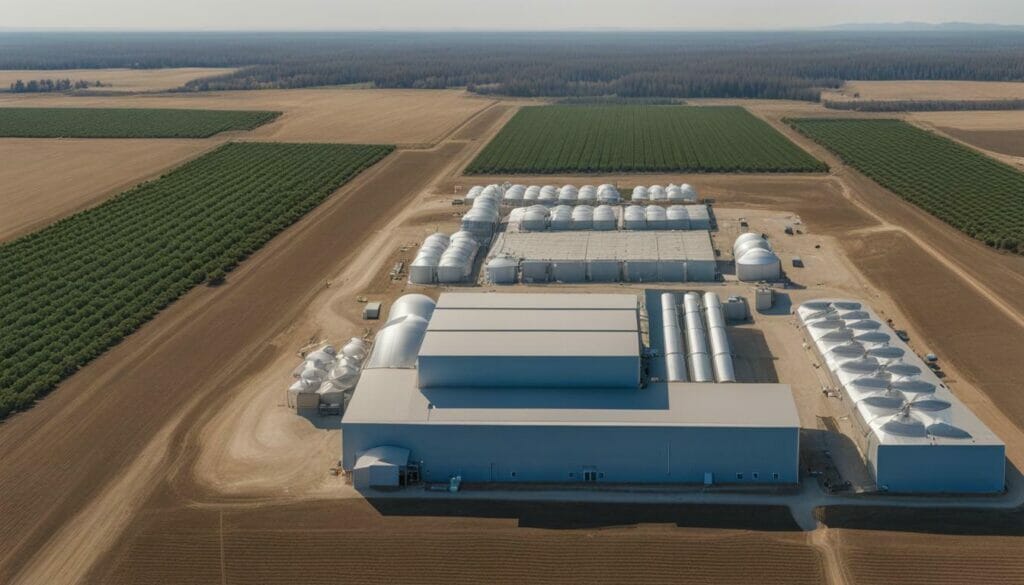
In summary, air quality is an essential environmental factor that must be carefully controlled in cannabis breeding. Proper ventilation, management of pollutant levels, and monitoring of CO2 levels are all crucial for maintaining healthy plants and achieving optimal results.
Water Quality and Cannabis Breeding
Water quality is a crucial environmental factor that affects cannabis breeding. The pH levels, mineral content, and water source can all impact plant health and genetic expression. Inadequate water quality can lead to poor growth rates, nutrient deficiencies, and even death in extreme cases.
The ideal pH range for cannabis plants is between 6.0 and 7.0. If the pH is too high or too low, the plant may not be able to absorb the necessary nutrients. In addition, the mineral content of the water should be taken into account. Hard water, which contains high levels of minerals such as calcium and magnesium, can be detrimental to plant growth. Water with a low mineral content, also known as soft water, may require additional nutrients to be added to the soil.
The source of the water used for irrigation should also be considered. Tap water may contain chlorine or chloramines, which can be harmful to the plant. It is recommended to let the water sit for at least 24 hours before using it for irrigation to allow any chlorine or chloramines to dissipate. Alternatively, a filtration system can be used to remove these chemicals.
Overall, monitoring and maintaining water quality is essential for successful cannabis breeding. By providing the plant with the proper nutrients and pH levels, growers can ensure optimal growth and genetic expression.
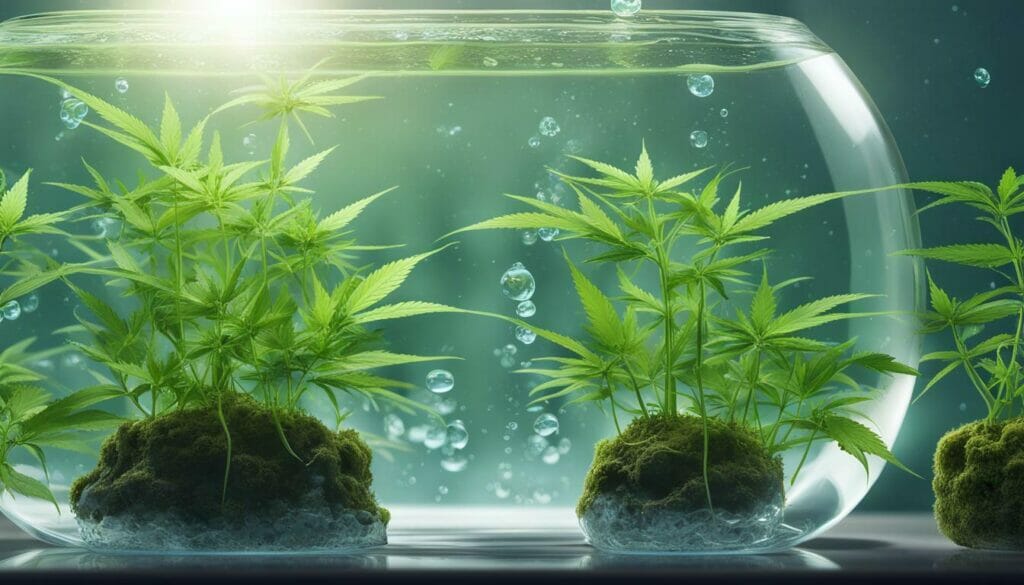
Climate and Cannabis Breeding
The climate in which cannabis is grown has a significant impact on the plant’s development and genetics. Different regions have varying environmental factors, such as temperature, humidity, and light exposure, which can affect the growth and quality of cannabis plants.
Cannabis is often grown in areas with warm, Mediterranean-like climates, but it can be grown in a wide range of environments with the right techniques and controls. Indoor growing setups allow for complete environmental control, while greenhouses provide a balance between outdoor and indoor cultivation.
When breeding cannabis in specific climates, it is important to consider the challenges and advantages. In colder regions, for example, cannabis plants may need additional heating to maintain optimal temperature ranges, while hotter regions may require more air conditioning to prevent overheating. Humidity levels may also need to be adjusted to accommodate different climates.
Growing cannabis indoors eliminates many climate-related challenges, but it requires significant investment in equipment and energy costs. Nevertheless, indoor setups provide growers with complete control over environmental factors, which can lead to consistent yields and quality.
Ultimately, the climate in which cannabis is bred plays a crucial role in determining its characteristics and genetic expression. Proper environmental control and techniques can help mitigate challenges and unlock the full potential of cannabis plants in different climates.
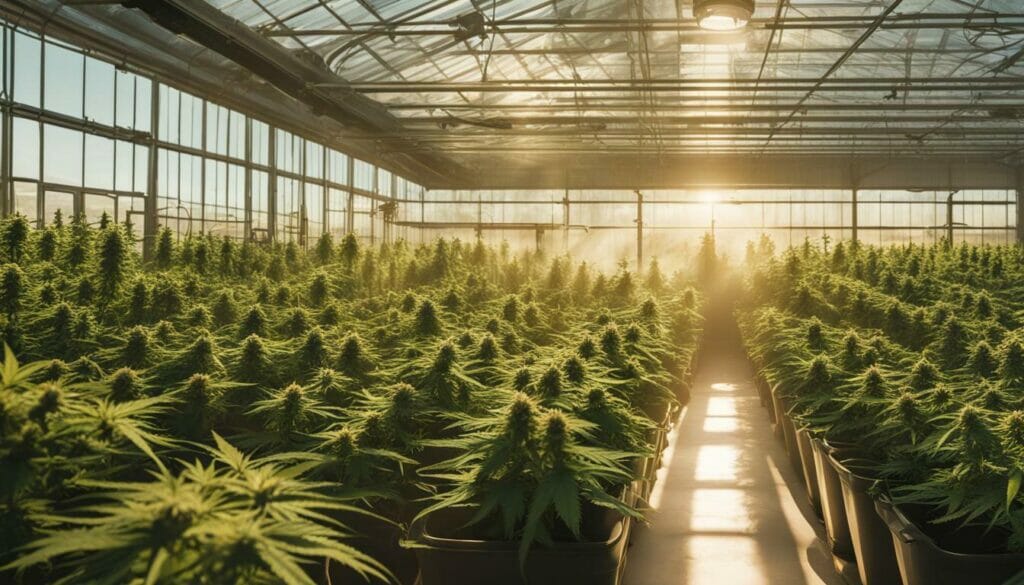
Environmental Control in Cannabis Breeding
Environmental control plays a critical role in cannabis breeding, as it allows growers to manipulate various factors to achieve optimal conditions for plant growth and genetic expression. Greenhouses, indoor growing setups, and other techniques can be used to regulate temperature, humidity, light exposure, and other environmental factors.
One of the most significant advantages of environmental control is the ability to grow cannabis year-round, regardless of the local climate. In areas with harsh winters or rainy seasons, indoor growing setups can provide a stable environment for breeding without the risk of extreme weather conditions.
Greenhouses, on the other hand, provide a balance between indoor and outdoor growing methods, allowing for natural sunlight exposure while still maintaining some control over temperature, humidity, and other factors.
However, implementing environmental control methods also requires careful monitoring and management to ensure that optimal conditions are maintained. Even slight variations in temperature, humidity, or nutrient levels can have a significant impact on plant development and genetic expression.
In addition to creating optimal conditions for growth and genetics, environmental control also allows for the production of consistent, high-quality cannabis strains. By manipulating environmental factors, growers can ensure that each plant in a given strain has the desired traits and characteristics, resulting in a more uniform product.
Overall, environmental control is a crucial aspect of cannabis breeding and cultivation. By using techniques such as indoor growing setups and greenhouses, growers can create optimal conditions for growth and genetics, leading to consistent, high-quality strains and greater control over the breeding process.
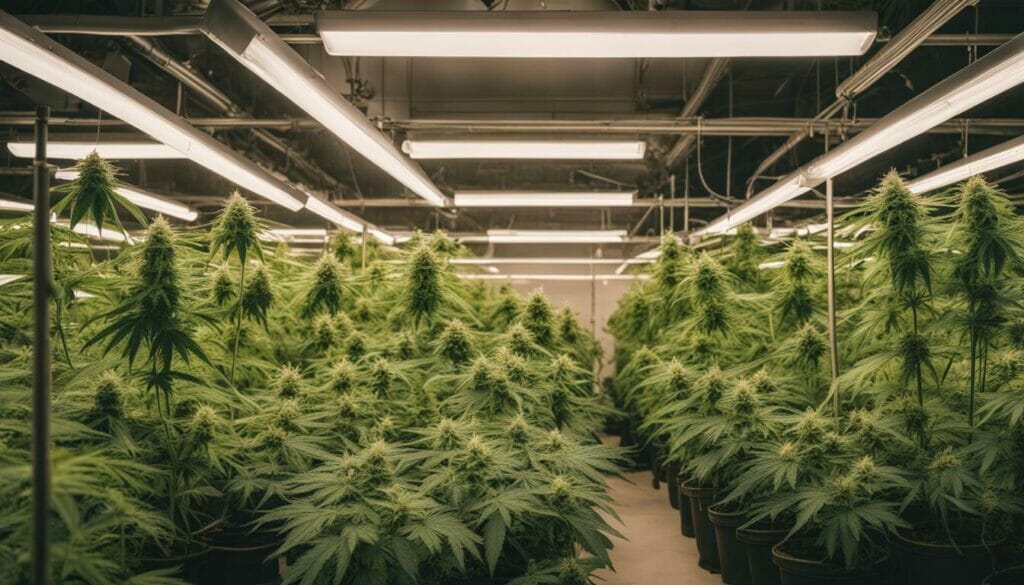
Genetic Stability and Environmental Factors
When breeding cannabis, genetic stability is a crucial factor to consider. However, genetics can be influenced by environmental factors, resulting in unpredictable genetic mutations. Therefore, it is essential to understand how environmental factors impact genetic stability in cannabis breeding.
According to research, environmental variations can lead to changes in the plant’s genetic makeup, causing genetic mutations that can be passed down to future generations. For example, changes in light exposure can alter the genetic expression of a plant, resulting in changes to its physical characteristics.
Environmental stress can also cause genetic mutations. When a plant is exposed to extreme temperatures or humidity levels, it may trigger a response to protect itself, leading to genetic changes that can be passed down to offspring.
To ensure genetic stability in cannabis breeding, it is crucial to select stable genetic lines that have shown resistance to environmental stressors. Additionally, using environmental control techniques, such as temperature and humidity regulation, can help minimize the impact of environmental factors on genetics.
Ultimately, the key to maintaining genetic stability in cannabis breeding is to carefully monitor environmental factors and select genetics that have shown resilience to those factors. By doing so, breeders can ensure that their offspring will have predictable traits and high-quality genetics.
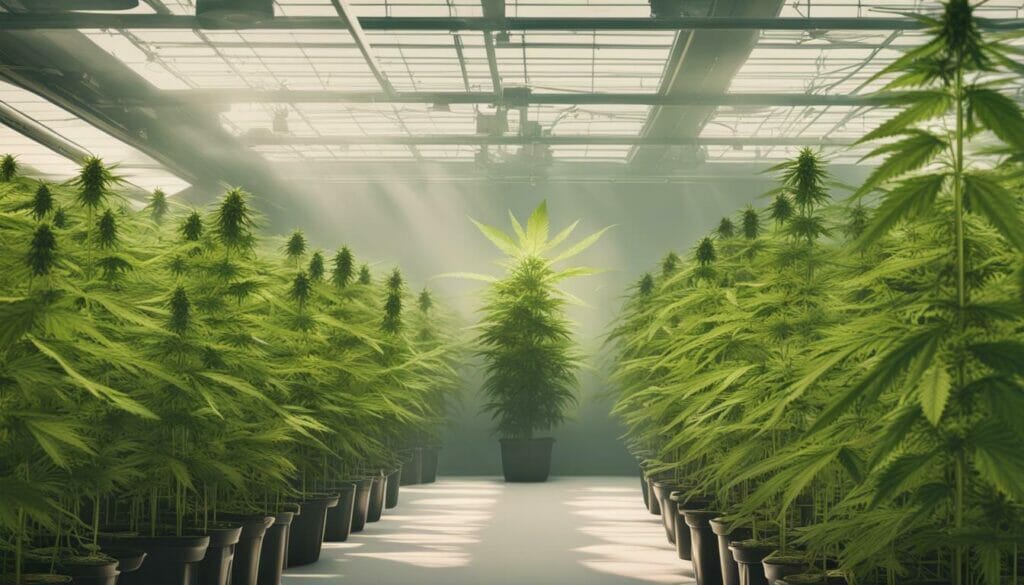
Conclusion
In conclusion, it is clear that environmental factors play a crucial role in cannabis breeding. From soil quality to air quality, temperature to humidity, and light exposure to water quality, each environmental factor affects the genetic expression and development of the cannabis plant.
Breeders must take into consideration the impact of environmental factors on their cannabis plants to produce high-quality, stable genetics. By controlling the environment, breeders can manipulate these factors to create optimal growing conditions that support the desired genetic traits.
It is important to note that genetic stability is critical in cannabis breeding, and environmental factors can lead to genetic mutations if not carefully monitored. Breeders should take care to select and cultivate stable genetic lines to ensure consistent results.
Emphasizing the Importance of Considering Environmental Factors in Cannabis Breeding
In summary, environmental factors are a vital component of cannabis breeding. Ignoring them can result in negative effects on the plant’s growth and genetic expression. By understanding and controlling the environment, breeders can produce high-quality, stable genetics that meet their desired traits.
FAQ
Q: How do environmental factors impact cannabis breeding?
A: Environmental factors play a crucial role in cannabis breeding as they can influence plant genetics, growth, and overall characteristics. Factors such as soil quality, temperature, humidity, light exposure, air quality, water quality, and climate can all affect the breeding process and the resulting plants.
Q: What is the significance of soil quality in cannabis breeding?
A: Soil quality is important in cannabis breeding as it affects the nutrient content, pH levels, and composition of the soil. These factors can impact the plant’s health, growth, and genetic expression, making it crucial to ensure optimal soil conditions for breeding success.
Q: How does temperature influence cannabis breeding?
A: Temperature plays a vital role in cannabis breeding. The ideal temperature range promotes optimal growth and genetic expression, while temperature fluctuations can affect the genetic stability and traits of the plants. Being mindful of temperature control is important to ensure successful breeding outcomes.
Q: What is the role of humidity in cannabis breeding?
A: Humidity levels significantly impact cannabis breeding. High humidity can lead to issues like mold and fungal growth, while low humidity can cause stress and affect genetic expression. Maintaining appropriate humidity levels contributes to healthy plant development and desired genetic traits.
Q: How does light exposure affect cannabis breeding?
A: Light exposure is a crucial environmental factor in cannabis breeding. Different spectrums of light influence plant growth and genetic expression, and proper manipulation of light conditions can enhance desired traits. Understanding the impact of light on breeding is essential for successful outcomes.
Q: What is the influence of air quality on cannabis breeding?
A: Air quality plays a significant role in cannabis breeding. Pollutants, carbon dioxide levels, and ventilation impact plant development and genetic traits. Maintaining clean air and proper airflow is essential for healthy breeding and desired genetic outcomes.
Q: How does water quality affect cannabis breeding?
A: Water quality is essential in cannabis breeding. pH levels, mineral content, and the water source can all impact plant health and genetic expression. Ensuring appropriate water quality contributes to successful breeding outcomes.
Q: How does climate impact cannabis breeding?
A: Different climates have varying effects on cannabis breeding. Breeding in specific regions or indoor environments presents unique challenges and advantages. Understanding the influence of climate is important to adapt breeding strategies accordingly.
Q: Why is environmental control important in cannabis breeding?
A: Environmental control is crucial in cannabis breeding as it allows for manipulation of environmental factors to optimize breeding outcomes. Techniques such as using greenhouses and indoor growing setups enable breeders to create ideal conditions for genetic expression and stable traits.
Q: What is the relationship between genetic stability and environmental factors in cannabis breeding?
A: Environmental factors can influence genetic stability in cannabis breeding. Variations in the environment can lead to genetic mutations, making it important to select and work with stable genetic lines. Understanding this relationship is key to producing consistent and desirable breeding results.
Suggested Articles
;)
;)
;)




 24 Jun 2025
24 Jun 2025  5 min read
5 min read


 December 10, 2023
December 10, 2023 


RESPONSES (0)
No responses yet. Be the first to respond!